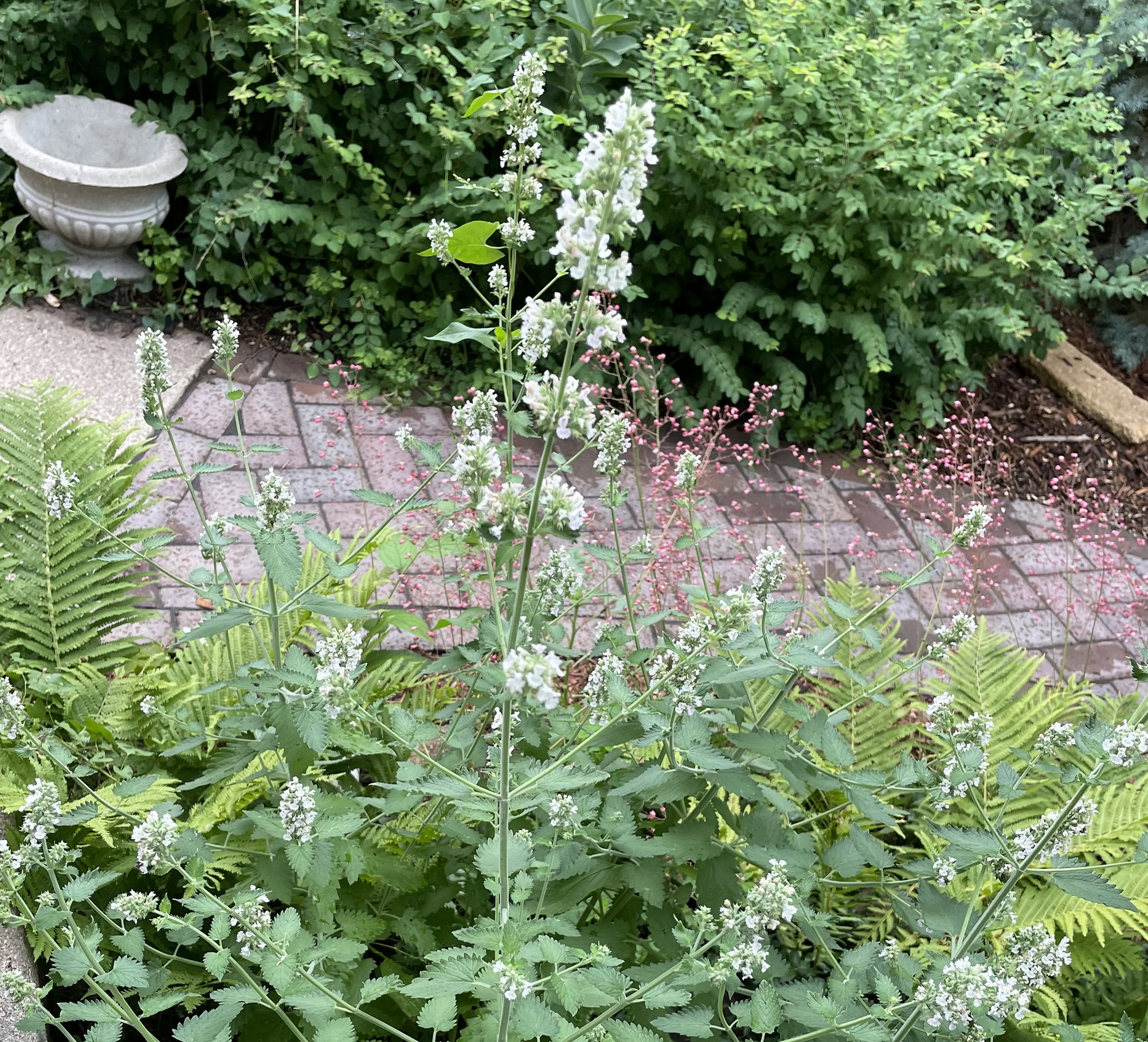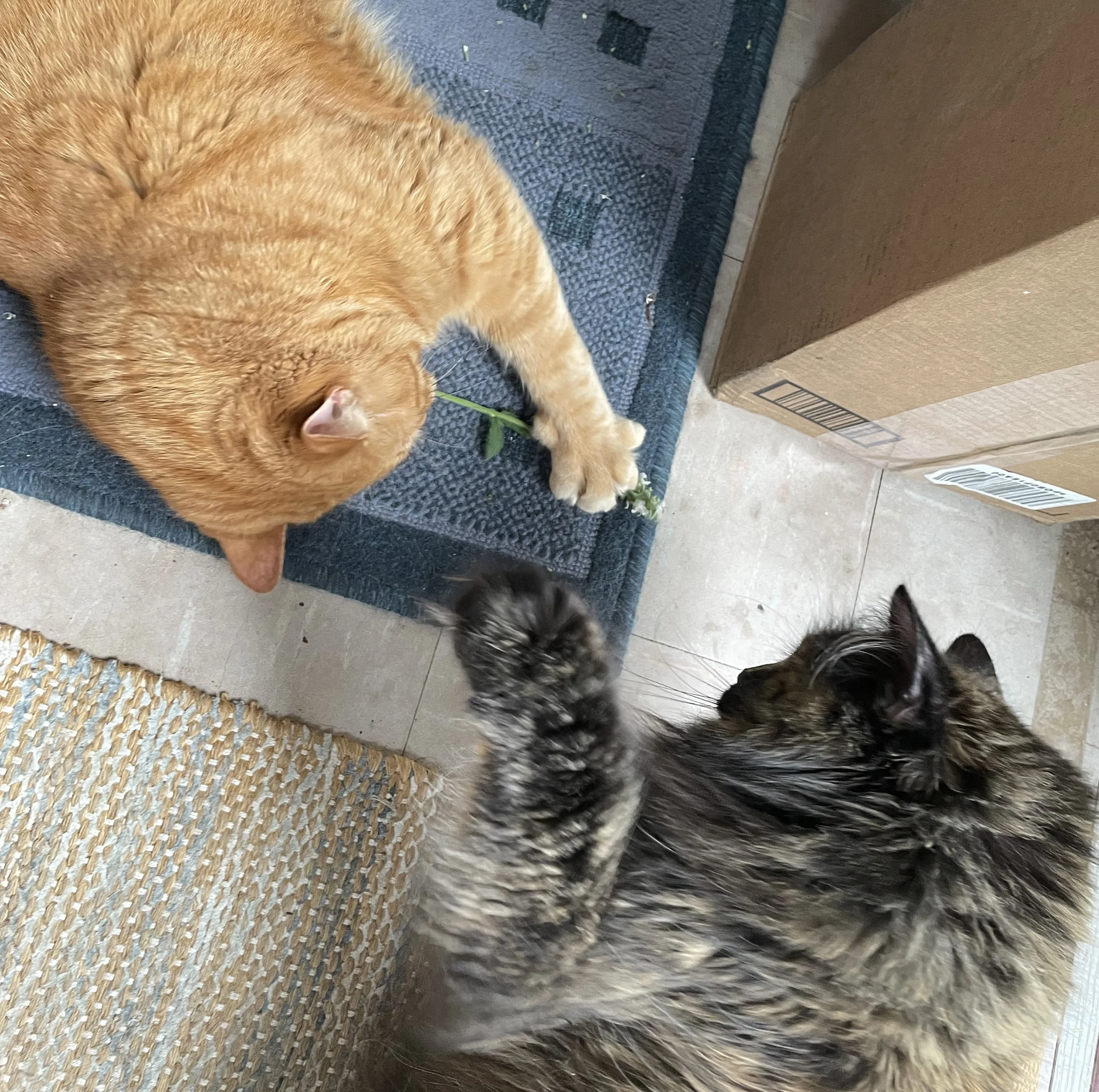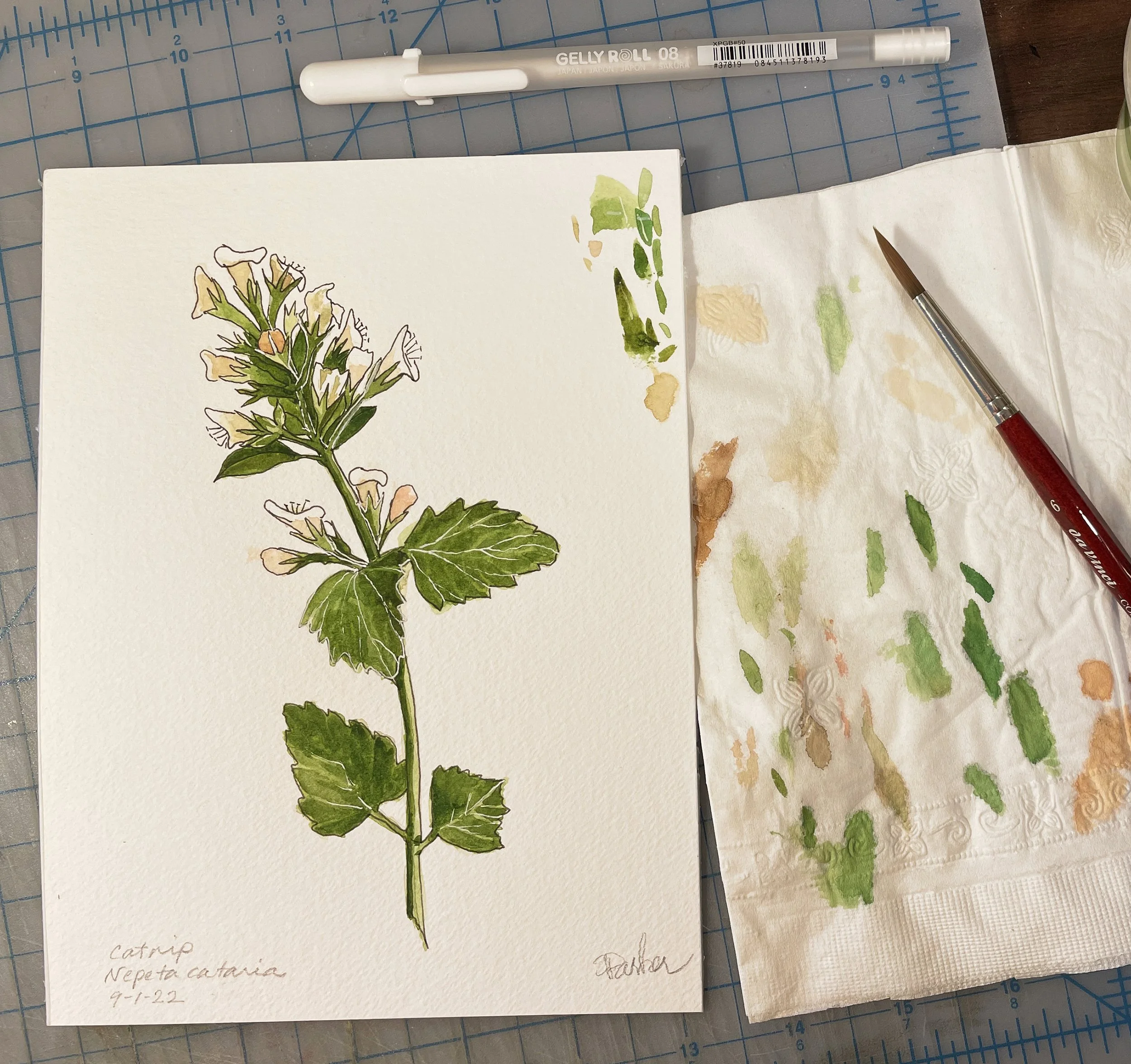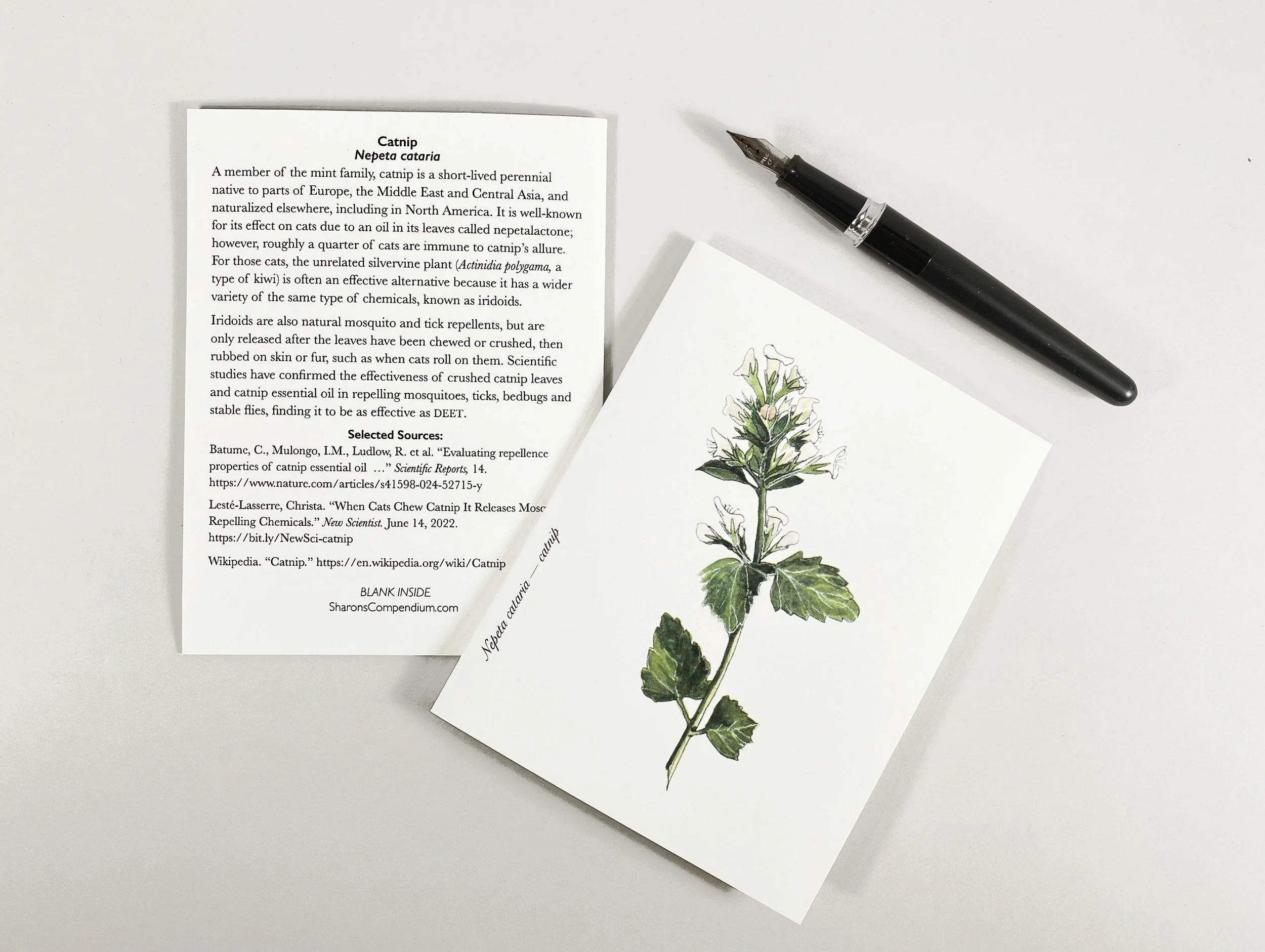Catnip—A Surprisingly Useful Herb
I noticed the tall weed growing next to my front steps one day, as if it had just popped up from amid the ferns that had been hiding it. It was kind of pretty, with spikes of dainty white flowers, and had a square stem, marking it as a member of the mint family. I broke off a leaf, rubbed it between my thumb and forefinger, and brought it up to my nose. It did not smell like mint, but it was redolent of something familiar. Could it be catnip?
I broke off a side stem with several leaves on it and brought it in the porch, laying it on the rug next to my very curious cats. They immediately started chewing it, pawing at it, and rolling on the herb. ID confirmed.
I took a fresh cutting up to my studio and made a little watercolor picture, which I used in my Year of the Tiger (2022) zine for a short article about how tigers and other big cats enjoy the herb too.
Recently, I decided to use the illustration on a notecard, with a little informative text on the back. Catnip has long been known to have medicinal benefits for humans, mainly as a soothing tonic when made into a tea, but new to me are its insect-repellent properties, which may explain why natural selection favored cats that like to roll on it.
Catnip (Nepeta cataria) is a short-lived perennial native to parts of Europe, the Middle East and Central Asia, and naturalized elsewhere, including North America. Its effect on cats is due to an oil in its leaves called nepetalactone. However, roughly a quarter of cats are immune to catnip’s allure; for those cats, the unrelated silvervine plant (Actinidia polygama, a type of kiwi) is often an effective alternative because it emits a wider variety of feline intoxicants, all of which are a type of chemical known as iridoids.
Iridoids are natural mosquito and tick repellents when rubbed on fur or skin, such as when cats roll on it, but only after the leaves have been chewed or crushed.
Multiple studies evaluated in 2023 and published in 2024 found that a dilution of catnip essential oil was comparable to DEET in repelling a few species of mosquito known to transmit a variety of diseases. It was much more effective and longer lasting than citronella, neem, or other well-known botanical oils. It was also found to be effective against ticks, bed-bugs, dust mites and stable flies.
There's only so much room on the back of a notecard, so despite catnip's many uses as a medicinal herb, the card only mentions its insect-repellent properties. Perhaps I'll make a series of minizines about useful herbs one of these days, focused on one plant at a time to keep it manageable. When I do, catnip may very well be the first one.



